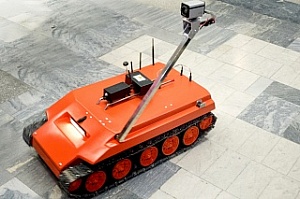Researchers at the International Laboratory of Technical Vision Systems have designed for the nuclear industry a robot capable of surveying an area for chemical and radiation contamination. The automated platform has a high throughput and can operate without recharging the batteries for up to ten hours.
- The robot is designed to assess the potential hazards of various objects and areas, - says Vladimir Syryamkin, one of the main developers, the head of the International Laboratory of Technical Vision Systems. - The presence of a gas analyzer and other measuring equipment makes it possible to perform express analysis, to determine the qualitative and quantitative composition of mixtures in the air, and to identify various hazardous substances, including explosives.
The robot transmits the received information in an online mode to the engineering control panel. At the same time, it is filming the investigated objects. It also can work in the infrared range, that is, see in the dark. If it is necessary, the robot places tags that are visible on the digital map, sampling soil, snow, water, and other parameters.
The software created by the scientists at the international laboratory allows robots to work both under an operator's control and independently. With the help of navigation systems, the robot determines its location and reports it to the engineer.
The robot has high cross-country ability, it can move equally easily on different surfaces - earth, snow, and ice. Therefore, the automated platform can be successfully applied, for example, in the Arctic for scientific research and solving industrial problems.
- Based on this automated platform, we can create various modifications of robots, depending on what functions need to be performed, - says Vladimir Syryamkin. - For example, for the evacuation and rescue of people, there is a version with a sliding platform and a loader. The kit includes, if necessary, another development of ours, a device that analyzes the vital functions of the human body - breathing, palpitations, and blood pressure.

